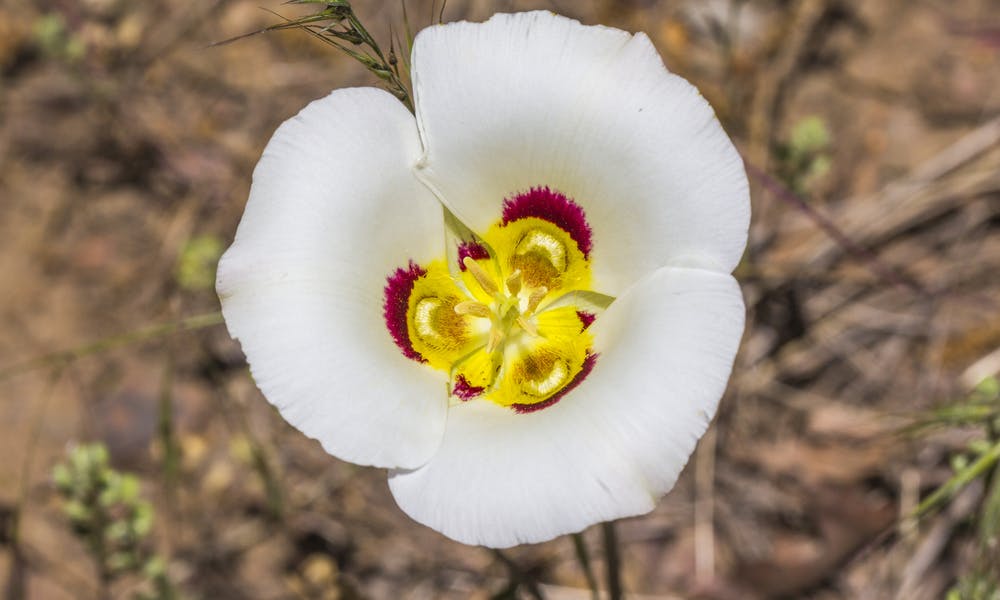MENU
Utah State Flower – The Delicious Lily Flower

Whether you prefer it cooked or raw, sego lily or Utah State flower might be the right choice. It is a beautiful bulbous perennial, common to the Western United States that have one to four flowers, tinged with magenta or lilac and has a purplish band that radiates from the heart-melting yellow base. Let’s keep reading to find out more about:
* The history of the Utah state flower
* The origins of the Utah state flower
* How the lily became the Utah state flower
* Uses of Utah State Flower
* How Does Utah State Flower Look Like?
* Can we eat the Utah state flower?
The History of the Utah State Flower
The Utah state flower is scientifically known as the sego lily, or the Calochortus gunnisonii or Calochortus nuttalli. It is popularly known as Mariposa lily, and it is an ornamental plant. What is more, the Calochortus is a genus of a range of 65 species that also include mariposa and sego lilies.
The sego flowers are common to dry areas, within open pine forests and hillsides that are 5,000-8,000 feet high. The sego flower is similar to a tulip in its appearance, with three petals that can be anything from white to lavender, with a yellow base. What is more, the three green sepals have a lance shape, with sharp points and two thirds as long as the petals themselves. Sego lily usually blooms anytime between May and July.
The Origins of the Utah State Flower
As we have established that Calochortus nuttallii is a species that belongs to the genus Calochortus, it is important to notice that it is usually refered to as Mariposa lilies. The epithet nuttalli is believed to be named after Thomas Nuttall, an English botanist who was related to these species by John Torrey and Asa Grey, two American botanists who made the connection in 1857.
Sego Lily, the Official State Flower of Utah
In 1911, the state of Utah decreed the sego lily as the official state flower. It blooms in early summer with beautiful white, yellow, or lilac flowers, and it freely grows on open grass and sage lands, found in the Great Basin of Utah. This flower was chosen as the symbol plant of Utah not only because of its natural beauty but also because of its historical significance.
The Utah state flower is also known as mariposa lily. It is well-known for its culinary uses. For instance, native Americans used to roast, make it into porridge or boil it before the Mormon pioneers came to America. What is more, the plant is now native to many western states, including North Dakota, Idaho, Montana, South Dakota, Nevada, Nebraska, Colorado, New Mexico, and even Arizona.
Uses of Utah State Flower
The flower has a long history of both cultivation and culinary uses. For instance, Native Americans used its bulbs, flowers, and seeds in their dishes. More specifically, the bulbs were used either for boiling, roasting or mashing them into a porridge, for their delicious culinary additions. These were confirmed by Hopi, Southern Paiure, Havasupai, Ute, and Navajo peoples. It is worthwhile to mention that the Hopi peoples used this flower in their ceremonies.
In terms of cultivation, the Utah state flower is well-known as an ornamental plant. It has an attractive tulip-shaped flower that not only supports but also attracts native pollinator species. What is more, it is fond of deep and sandy soil that has good drainage and is cold-hardy. New plants can be propagated from new bulblets, but they usually require two years before they flower.
The flower grows as a monocot that has only one stem and one single, large flower. This is one of the most beautiful flowers that bloom early in semi-desert climates. However, the Utah state flower does dry up quite shortly after it blossoms.
What is more, its flowers are breathtaking. They are goblet-shaped, with a satin, smooth feel. Utah State flower is usually white but has cherry-red and yellow parts at the glands or the base. The flowers are usually three inches across, offering one of the best views you could ever hope for.
When it comes to the leaves, sego lilies have a grass-like texture. They usually have a few basal leaves and a few leafy stems. They can be mistaken to deathcamas before flowering, but one can make the difference by noticing the trough-like cross section of the leaves that have a U-shaped form, while the deathcamas have a V-shaped leaf that is quite sharp.
Can We Eat the Utah State Flower?
As briefly mentioned above, the Utah state flower is edible. In fact, the bulb can be eaten both raw and cooked. All you need to do is to remove the outer husk. It has an excellent flavor when eaten raw, but slow-cooking can truly boost the flavor of the plant. When cooked, the bulbs have quite a crisp flavor, with a nutty taste and pleasant savor.
Instead of cooking, you could also dry the bulbs and then dry them. The resulting powder can be mixed with cereal flours and bake bread with a special, delicious twist.
The leaves are also edible, and they can be cooked as a potherb. However, the leaves of the Utah state flower are hardly sufficient for any concoction, and ripping them off will significantly weaken the plant, so it is not recommended to use the leaves.
As for the seeds, they can be ground into a fine powder, while the flower buds and the flowers can be consumed raw. The last ones can be deliciously added to any salad bowl to add a nutty twist that offers plenty of taste and nutrients.
Wrapping Up
All in all, Utah state flower is not only rich in history but also reach in taste. It is a beautiful flower that is a great addition to any garden.

